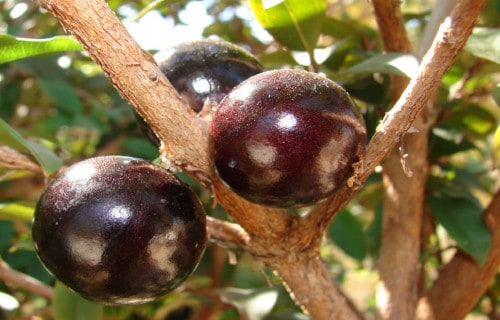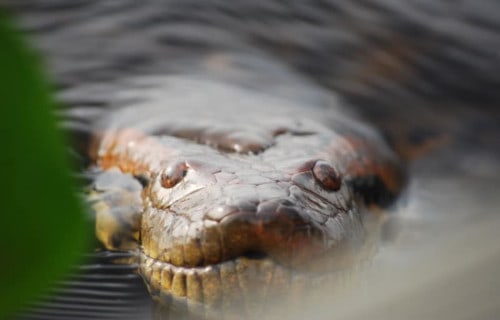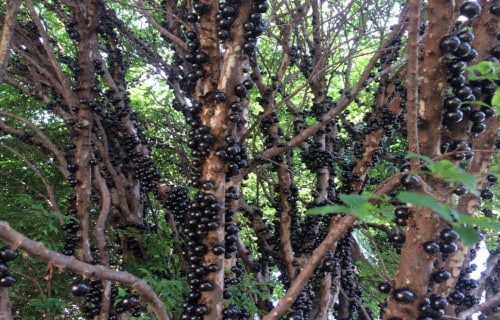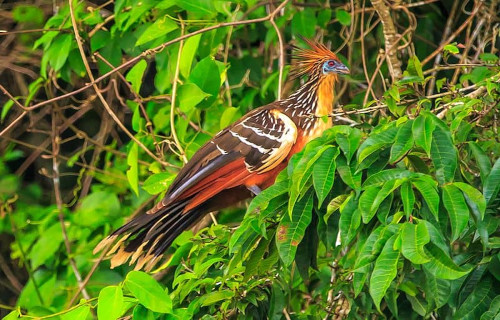Here we present to you our choice for 6 Amazing South American Species. Every portion of our beautiful world plays host to a variety of life, and this region is certainly no exception. This region teems with life in myriad forms. Many of those amaze us, to be certain, but we have only
Royal Panaque
Royal Panaque Facts
- The Royal Panaque constitutes a recently discovered species within an extraordinary fish genus. We currently know of only seven known species in this rather unique animal genus.
- Like all the other incredible species contained in the genus, this one classifies as what many have given the name of armored catfish.
- Without a doubt, the most astonishing characteristic of this recently discovered animal remains the nature of its rather highly unique diet.
- This amazing and truly surprising fish also ranks as one of only a handful of fish species that actually consume wood.
Royal Panaque Physical Description
The Royal Panaque does not possess scales as most other fish do. In fact, the body of this unique creature grows encased in relatively heavy armor.
Yet, the lone exception to this protection remains the underside, which appears soft. That, therefore, represents the Achilles Heel of the animal.
In coloring, the Royal Panaque appears principally a light gray. Horizontally oriented dark gray squiggles run the length of the body.
The animal also attains an average length of roughly 17 in (43 cm). Due to the weight of its armor, it remains a poor swimmer.
However, the animal does possess a powerful sucker-like mouth, which it uses to cling to rocks or submerged logs.
- Kingdom: Animalia
- Phylum: Chordata
- Class: Actinopterygii
- Order: Siluriformes
- Family: Loricariidae
- Genus: Panaque
- Species: P. nigrolineatus
Royal Panaque Distribution, Habitat, and Ecology
The recently discovered, and rather fascinating, Royal Panaque evolved as endemic to the large river basins in the countries of Colombia, Brazil, and Venezuela.
More specifically, these river basins consist of the enormous, and vitally important, Amazon River Basin, and the Orinoco Basin, in South America.
Remarkably, this creature remains herbivorous in nature with one unique adaptation. It consumes not only algae but also feeds on wood.
Rather specialized bacteria in its digestive tract make this possible.
Mara
Mara Facts
- The Mara represents a small genus within the cavy family. Currently, we know of only two separate species of this genus still existing.
- These two related but distinct species have been given the common names of the Chacoan and the Patagonian maras.
- Genetically, this rather surprising genus also appears to be closely related to the much smaller guinea pig. Appearances can be rather deceiving.
- This unique animal also constitutes the fourth largest known rodent on earth.
- It also has the ability to move much faster than most rodents, being capable of running or hopping at speeds of as much as 18 mph (30 kph).

CCL: https://bit.ly/1jxQJMa
Mara Physical Description
The rather surprising Mara possesses a stocky physique, with three sharply clawed toes on its rear feet, and four on the front feet. Many people, therefore, compare its appearance to a long-legged rabbit.
The animal typically displays a dark brown on its head and body. The hindquarters remain darker and sometimes almost black, yet the stomachs generally show white.
Individuals also average roughly 18 in (45 cm) in height. Mature individuals also weigh as much as 24 lb (11 kg).
- Kingdom: Animalia
- Phylum: Chordata
- Class: Mammalia
- Order: Rodentia
- Family: Caviidae
- Genus: Dolichotis
Mara Distribution, Habitat, and Ecology
The fascinating Mara, both species, evolved as endemic to several regions of South America. It remains unclear if the animal ever possessed a greater distribution.
While the animal does appear in other areas in small numbers, it also appears to be most common in Paraguay and the Patagonian steppes of
Argentina.
Depending upon its precise habitat, it generally prefers to live in regions consisting of grasslands and small shrubs, specifically the pampas of Argentina.
This creature usually takes a lifetime mate, remaining monogamous. While it typically only gives birth once per year, up to four litters per year is not unknown.
The Mara feeds entirely as a herbivore. The diet consists primarily of a combination of green vegetation, grass, and fruit.
Jabuticaba
Jabuticaba Facts
- The truly unique Jabuticaba constitutes a one-of-a-kind tree that also happens to inhabit a highly restricted range of the world.
- Its most obvious and immediately recognizable feature remains the utterly unparalleled manner in which its fruit appears.
- Unlike all other known trees on earth, its fruit grows directly from the trunk, and also occasionally from the numerous limbs.
- The fruit, which appears in prodigious numbers, also remains entirely edible. Locals often eat them raw or use them to prepare jams, jellies, juice, and even wine.
- Despite its limited habitat range, it does not yet appear on the IUCN Red List. It does, however, appear in the Catalogue of Life.

CCL: http://bit.ly/2QZT99x
Jabuticaba Physical Description
The mesmerizing Jabuticaba remains a fairly slow-growing variety of tree. Yet it sometimes attains a height of as much as 147 ft (45 m) if not pruned by man.
In addition to how its fruit appears, it also displays yet another fascinating trait. Its leaves actually display a pinkish-orange color during the youth of the tree. However, as the tree ages, these change to dark green in color.
The white flowers, which develop straight from the trunk and limbs, appear in enormous numbers. In the wild, these produce fruit once or twice by year.
However, in cultivation, the species often produces fruit year-round in tropical climates.
The fruit itself develops as a large berry that typically reaches about 1.6 in (4 cm) in diameter. The outer skin appears a dark purple, resembling a large grape.
- Kingdom: Plantae
- Phylum: Angiosperms
- Class: Eudicots
- Order: Myrtales
- Family: Myrtaceae
- Genus: Plinia
- Species: P. cauliflora

CCL: http://bit.ly/2QZT99x
Jabuticaba Distribution, Habitat, and Ecology
The amazing Jabuticaba only grows in a seriously limited area. This entails a total of 3 states in the country of Brazil.
In the wild, it appears most commonly in moderately thick forests. However, it has proven itself to be adaptable to other habitats as well.
Additionally, the Jabuticaba also grows equally well at altitudes of as low as sea level and as high as 3,00 ft (914 m).
While all related species evolved as subtropical and can tolerate mild, brief frosts, some species may be marginally more cold-tolerant.
This amazing tree has also been transplanted to other regions of the world, including the United States, in North America. However, the different climate restricts its growth somewhat.
Hoatzin

CCL: http://bit.ly/2xLZ0ap
Hoatzin Facts
- The Hoatzin represents a unique species of tropical bird and appears to also be endemic to a very specific type of habitat throughout its natural range.
- The extremely unusual bird also remains widely regarded as the most enigmatic of all known extant species of bird.
- It remains so distinct from any other recognized avian that scientists now classify it in its own separate family and suborder.
- The Hoatzin also has the well-deserved reputation of exuding a strong manure-like odor.
- There remains no clear picture of the evolutionary path of this animal to the present.
Hoatzin Physical Description
In terms of general shape, the Hoatzin appears similar to the pheasant. The total body length averages roughly 26 in (65 cm), with no discernible sexual dimorphism.
The neck grows elongated, and the head stays relatively small. The face also appears devoid of feathers. The species also remains noted for its bright maroon colored eyes. Atop the head sits a large spiky crest.
The tail grows long and broad, while the wings and back typically show a dark shade of brown. The underside typically displays combinations of off-white and chestnut in color.
One unexplained evolutionary trait of the Hoatzin ranks as extremely unique. Though they disappear shortly after birth, the hatchlings are born with claws on their wing digits.
- Kingdom: Animalia
- Phylum: Chordata
- Class: Aves
- Order: Opisthocomiformes
- Family: Opisthocomidae
- Genus: Opisthocomus
Hoatzin Distribution, Habitat, and Ecology
In the Amazon Basin, the Hoatzin occurs in riparian forests, mangrove forests, and swamps. Elsewhere in South America, it also lives in the Orinoco Delta.
The Hoatzin feeds primarily on the leaves of plants native to its specific habitat, and also on the fruit and flowers occasionally.
Despite the relatively large wings, the bird is a poor flier. It also remains quite clumsy on the ground, moving awkwardly. The bird also possesses a generally mild temperament.
The animal generally congregates in small colonies, and breeding occurs during the rainy season.
The existence of the claws on the wings of the hatchlings has led many to believe it is descended from the Archaeopteryx, which disappeared around 150 million years ago.
There remains absolutely no evidence of that, however.
Jewel Caterpillar
Jewel Caterpillar Facts
- The gorgeous Jewel Caterpillar, a member of the Dalceridae family, is the incredibly beautiful and translucent larval stage of the Acraga coa.
- Currently, scientists still know very little about either the caterpillar stage of the species or its adult counterpart.
- The brilliant color of the many spiny protuberances appears in contrast to the virtually transparent body.
- This serves as a visual warning to both would-be predators and also many other potential enemies living in the rainforest.
Jewel Caterpillar Physical Description
Regardless of its majestic beauty, the Jewel Caterpillar nevertheless ranks as a rather small species.
On average, individuals rarely attain an overall length of more than an inch (2.5 cm) in length.
This small insect also evolved a covering consisting of numerous spiny protuberances.
In addition, these evolved to be easily detachable, and break off quite easily when contacted.
The entire body appears glass-like, except for the small protuberances, which appear reddish-orange.
- Kingdom: Animalia
- Phylum: Arthropoda
- Order: Lepidoptera
- Family: Dalceridae
- Genus: Acraga
- Species: A. coa
Jewel Caterpillar Distribution, Habitat, and Ecology
The breathtaking Jewel Caterpillar represents a fuzzy orange moth native to Mexico, Costa Rica and several Caribbean islands.
The tiny body of the Dalceridae also remains slightly toxic and despite its glass-like appearance, the bodies have a gelatinous consistency.
That rather surprising trait literally helps to gum up the mandibles of attacking insects.
The bellies, however, remain much more vulnerable. At times, parasitic fly maggots can enter the caterpillar’s body from there and just reside inside forever until they eventually kill the small but beautiful caterpillar.
Most of the few individuals found so far have all been seen in the mangrove forests of South America and Central America. The animal so far appears to especially like the red mangrove tree leaves.
Green Anaconda

CCL: http://bit.ly/2zBWbKi
Green Anaconda Facts
- The Green Anaconda serves as the name of a large and powerful non-venomous species of a boa constrictor. It also remains the heaviest, and the second longest known species of snake still extant.
- The Green Anaconda evolved as endemic to a region of South America, east of the Andes. This range includes the countries of Venezuela and Columbia, the island of Trinidad, and as far south as Paraguay.
- This reptile typically occurs in rather specific habitat zones of the Amazon Basin and Orinoco Basin. These specific habitat zones include marshes, swamps, and slow-moving streams.
- It remains slow and cumbersome on land, yet in the water, it becomes an agile and stealthy swimmer.

CCL: http://bit.ly/2IjEG4n
Green Anaconda Physical Description
The Green Anaconda attains a length of as much as 22 ft (6.6 m). This species also exhibits a slight degree of sexual dimorphism.
The females average about 16 ft (5 m) in length, and the males, being rather smaller, average roughly 9.8 ft (3 m) in length.
Weights also vary rather greatly, depending on how recently the animal has fed. Generally, adults average between 66-154 lb (30-70 kg) in weight.
The coloring of the Green Anaconda also typically consists of an olive green background. This also has an overlay of dark blotches along the entire length of the body.
In comparison with the body, the head stays rather narrow, and the eyes position themselves high on the head.
- Kingdom: Animalia
- Phylum: Chordata
- Class: Reptilia
- Order: Squamata
- Family: Boidae
- Genus: Eunectes
- Species: E. murinus

CCL: http://bit.ly/2xQPH8p
Green Anaconda Patterns of Behavior
The Green Anaconda lives as a primarily nocturnal animal. It also commonly spends the vast majority of its life in or around water.
In the water, it becomes capable of moving rapidly and attacks its prey with stealth. The Green Anaconda usually constricts around its prey until it suffocates.
This animal feeds upon virtually any prey it can catch, even very large creatures. Individuals also generally behave rather aggressively by nature.
It also lives a solitary life, except during mating season. The mating season typically runs from April to May.
As an ovoviviparous creature, the Green Anaconda typically gives birth to 20-40 live young. However, as many as 100 offspring are occasionally produced.
6 Amazing South American Species
This list of 6 Amazing South American Species barely touches on the incredible array of life in this region. It even thrives in the most remote and seemingly inhospitable of regions. But it faces great challenges now, due to man’s effect on its habitat. We must do all we can to preserve the remarkable life in this extraordinary part of the world.
Check out our other articles on 5 Incredibly Wonderful Trees, 8 Swoon-Worthy Caves, 7 Dazzling Desert Dwellers



















Leave a Reply